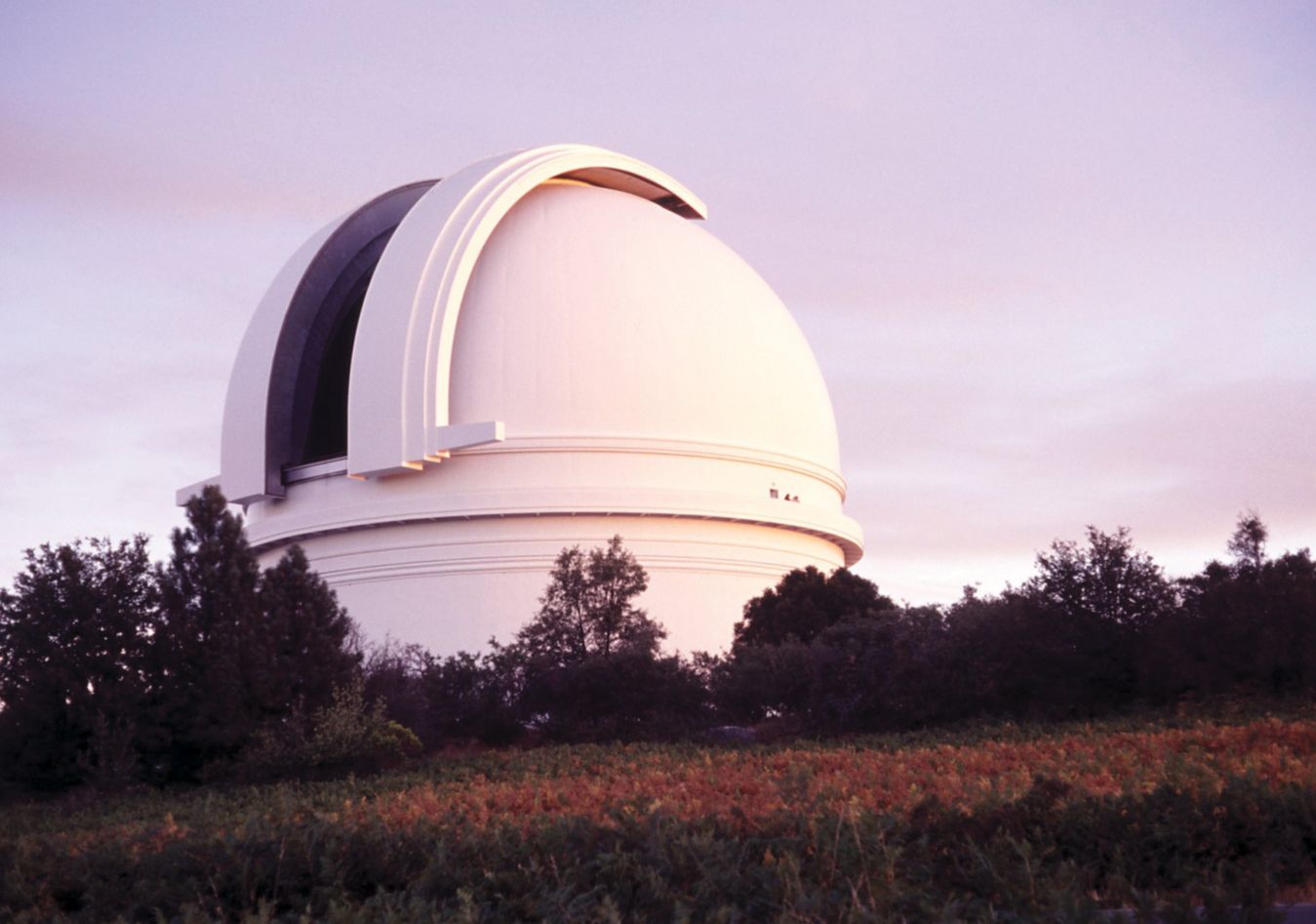A tale of two telescopes
DOI: 10.1063/PT.3.4903
Home to the 200-inch Hale Telescope and the 48-inch Samuel Oschin Telescope, Palomar Observatory in Southern California has been at the forefront of astronomical research for more than seven decades. The Hale Telescope was the largest such instrument in the world when it saw first light in 1949, and although in recent years larger telescopes have been built at sites with better atmospheric conditions, it has probably contributed more to our understanding of the universe than any telescope other than Galileo Galilei’s.

Palomar Observatory, home to the 200-inch Hale Telescope pictured here, is one of the most important astronomical research sites in history.
CONESLAYER/WIKIMEDIA COMMONS/CC BY 3.0

The Oschin Telescope, which began operation in 1948, has a similarly impressive resumé. The wide-field survey telescope’s first decade in operation was devoted to the National Geographic Society–Palomar Observatory Sky Survey, a survey of the northern sky that led to the discovery of innumerable astronomical objects and was supplanted by digital successors only in the last 15 years.
Nevertheless, Linda Schweizer’s new book, Cosmic Odyssey: How Intrepid Astronomers at Palomar Observatory Changed Our View of the Universe, is not a history of the telescopes themselves, nor of Palomar Observatory (although there’s plenty of history in it). Her goal is more ambitious: to describe a selection of the century’s most important advances in astronomy from the perspective of Palomar Observatory.
That approach is uniquely suited to Palomar. The observatory has been responsible for the discovery of an astonishing variety of astronomical objects, including the first quasar, the first brown dwarf, the first Centaur asteroid, the first solar-system object with an orbit extending beyond the Kuiper belt, and the supermassive black hole recently imaged by the Event Horizon Telescope collaboration.

Less spectacular but equally important results have come from long programs of observations at Palomar. Allan Sandage described the evolution of stars after they exhaust the hydrogen fuel at their centers in 1953 and worked throughout his career to refine the cosmic distance ladder. Fritz Zwicky hypothesized that the tidal forces at play during encounters between galaxies create galactic filaments and other peculiar structures. Other developments include the interpretation and classification of supernovae, which led to the discovery that the expansion of the universe is accelerating; the first description of the evolution of quasars over cosmic time; the study of young galaxies at high redshifts and of the intergalactic gas from which they formed; and the first influential models of the Milky Way’s formation.
The Hale and Oschin telescopes are among the oldest ones still actively used by researchers. That longevity is a tribute not only to the vision of their builders but also to the efforts of scientists and engineers who over the years built new state-of-the-art spectrographs, cameras, and detectors for the two telescopes. Prominent among those are Gerald Neugebauer and his students, who discovered and studied many of the brightest infrared sources in the sky at Palomar; James Gunn and James Westphal, whose work on CCD detectors at Palomar prepared them to build the Hubble Space Telescope’s first-generation camera; and Shrinivas Kulkarni, who led the development of a 600-megapixel camera for the Oschin Telescope. The camera is now being used to detect moving objects, including asteroids and comets, and transient events such as supernovae and gamma-ray bursts.
Schweizer is a research astronomer and science writer, and her experience in both disciplines has resulted in an authoritative book covering a wide breadth of topics. Based on hundreds of interviews she conducted over more than a decade, the book provides a unique historical record of 20th-century astronomy at Palomar. Cosmic Odyssey is aimed at the general public, but readers with some background in undergraduate physics will have an easier time with the book.
My only regret is that Schweizer did not include more stories about the colorful personalities who spent their careers at Palomar. She mentions Zwicky’s famous comment that some of his colleagues were “spherical bastards”—because they were bastards when viewed from any direction—but that anecdote is only one of many legendary tales from Palomar’s long history. I hope that someday she will tell those personal stories too.
More about the Authors
Scott Tremaine is a professor emeritus at the Institute for Advanced Study and Princeton University, and he currently works at the University of Toronto. He is a theoretical astrophysicist and to his regret has never observed at Palomar Observatory.
Scott Tremaine. University of Toronto, Toronto, Ontario, Canada.




